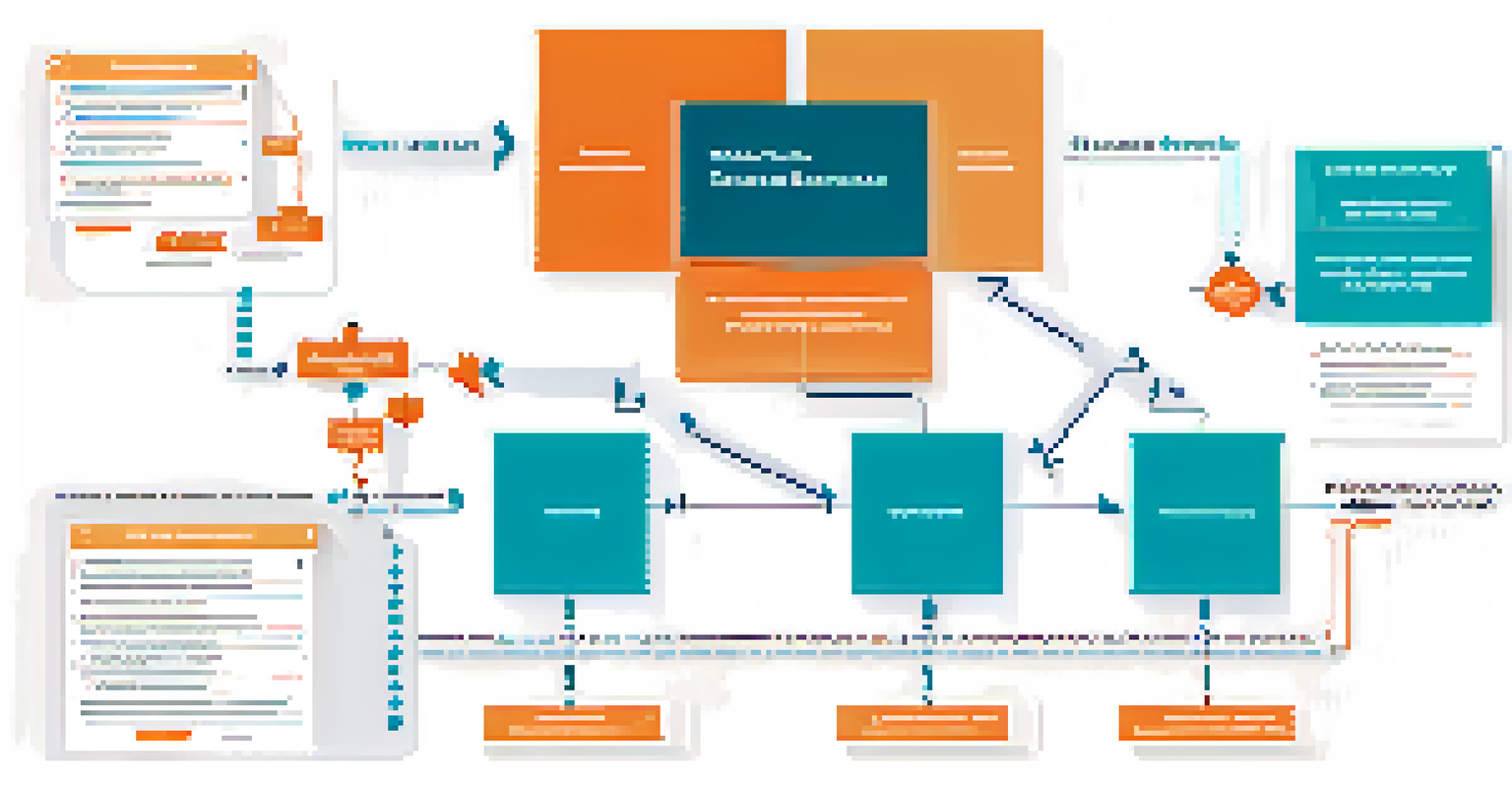The Impact of Tokenomics on DAO Governance Models

Understanding Tokenomics and Its Significance
Tokenomics, a blend of 'token' and 'economics', refers to the study of a cryptocurrency's token's design, distribution, and utility within its ecosystem. It plays a crucial role in shaping how a decentralized organization functions, influencing everything from decision-making to resource allocation. By understanding tokenomics, stakeholders can grasp how incentives are structured to promote participation and collaboration within decentralized autonomous organizations (DAOs).
Tokenomics is not just about creating a token; it's about creating a sustainable ecosystem where individuals are motivated to participate and collaborate.
For example, a DAO may issue tokens that grant voting rights to holders, enabling them to influence governance decisions. This incentivizes members to hold tokens and actively participate in the community. The better the tokenomics, the more likely it is that members will engage with the DAO and work towards its success.
Ultimately, the design of tokenomics can either empower or hinder a DAO's governance model. When done right, it aligns the interests of token holders with the health of the organization, creating a self-sustaining cycle of growth and innovation.
The Anatomy of DAO Governance Models
DAO governance models provide the framework for how decisions are made within these organizations. They dictate how proposals are created, debated, and voted on, affecting the overall direction of the DAO. Understanding these models is essential for anyone looking to engage with or invest in a DAO, as they reveal how power is distributed among members.

For instance, some DAOs use a one-token-one-vote system, where each token grants one vote, fostering a sense of equality among participants. Others may implement weighted voting, where larger holders have more influence, reflecting a meritocratic approach. Each model has its pros and cons, impacting member engagement and the overall effectiveness of governance.
Tokenomics Drives DAO Participation
Effective tokenomics creates incentives that encourage members to actively engage and contribute to the success of a DAO.
The choice of governance model often intersects with tokenomics, as the design of the token can influence how these models operate. A well-structured tokenomics can complement a governance model, enhancing transparency and accountability while ensuring all voices are heard.
How Tokenomics Influences Member Participation
In a DAO, member participation is crucial for its success and sustainability. Tokenomics significantly impacts how and why members engage with the organization. By designing incentives that reward active participation, DAOs can foster a vibrant community that is invested in the organization's goals.
The future of governance lies in the hands of communities that understand the importance of tokenomics and its impact on member engagement.
For example, a DAO might distribute tokens as rewards for contributions to projects or for participating in governance votes. This not only encourages members to engage but also aligns their interests with the DAO's objectives. The more they contribute, the more they benefit, creating a positive feedback loop.
Conversely, poorly designed tokenomics can lead to disengagement. If members feel their efforts go unrewarded or that they lack influence, they may withdraw from participation, ultimately jeopardizing the DAO's mission.
The Role of Incentives in DAO Tokenomics
Incentives are the lifeblood of any tokenomics strategy, acting as motivators for participation and collaboration. They can take many forms, such as voting rights, profit-sharing, or exclusive access to resources. Understanding how to design effective incentives is crucial for a DAO's governance model.
For instance, a DAO might implement staking mechanisms where members lock up their tokens to earn rewards, thus promoting long-term commitment. This not only stabilizes the token's value but also encourages members to think about the organization's future rather than short-term gains.
Governance Models Shape Decision-Making
The structure of DAO governance models determines how decisions are made and power is distributed among members.
Moreover, well-crafted incentives can also help to mitigate conflicts of interest and align the goals of individual members with those of the DAO. When everyone benefits from collective success, the community becomes more cohesive and effective.
Challenges in Tokenomics and DAO Governance
Despite the potential benefits, integrating tokenomics into DAO governance is not without its challenges. One significant hurdle is ensuring fairness and transparency in how tokens are distributed and used. If members feel that the tokenomics are skewed in favor of certain individuals or groups, it can lead to disenfranchisement and conflict.
Additionally, the volatility of cryptocurrency markets can pose risks to a DAO's stability. Fluctuating token values might affect members' willingness to participate or invest time and resources, creating uncertainty in governance processes. A DAO must find ways to stabilize its tokenomics to foster trust and commitment among members.
Lastly, as DAOs grow and evolve, their tokenomics may need to adapt. This requires ongoing dialogue and adjustments to ensure that governance remains effective and aligned with the changing needs of the community.
Case Studies: Successful Tokenomics in DAOs
Examining successful DAOs gives valuable insights into effective tokenomics and governance. For example, MakerDAO has implemented a robust tokenomics model that incentivizes stability and encourages active participation through its MKR token. This governance token grants holders voting rights on key decisions, allowing the community to steer the direction of the platform.
Another notable example is Gitcoin, which utilizes a unique quadratic funding model, where contributions from the community are matched based on the number of contributors rather than the amount donated. This approach empowers smaller contributors and promotes inclusivity, showcasing how thoughtful tokenomics can enhance governance.
Challenges in Tokenomics Implementation
Integrating tokenomics into DAO governance faces hurdles like ensuring fairness in token distribution and managing market volatility.
These case studies highlight that while there is no one-size-fits-all approach, successful DAOs demonstrate the importance of aligning tokenomics with governance models to achieve desired outcomes and foster a thriving community.
The Future of Tokenomics in DAO Governance
As the blockchain space continues to evolve, so too will the interplay between tokenomics and DAO governance. Emerging technologies and concepts, such as decentralized finance (DeFi) and non-fungible tokens (NFTs), are likely to create new opportunities and challenges for DAOs. Embracing these innovations will be essential for DAOs looking to stay relevant and effective.
Furthermore, as more people become aware of DAOs and their potential, the demand for improved governance and tokenomics practices will grow. This could lead to a push for greater transparency, accountability, and inclusivity within DAOs, shaping the future landscape of decentralized governance.

Ultimately, the future of tokenomics in DAO governance lies in its ability to adapt and evolve with the needs of its community. By prioritizing member engagement and aligning incentives with the organization's goals, DAOs can pave the way for a more decentralized and equitable future.